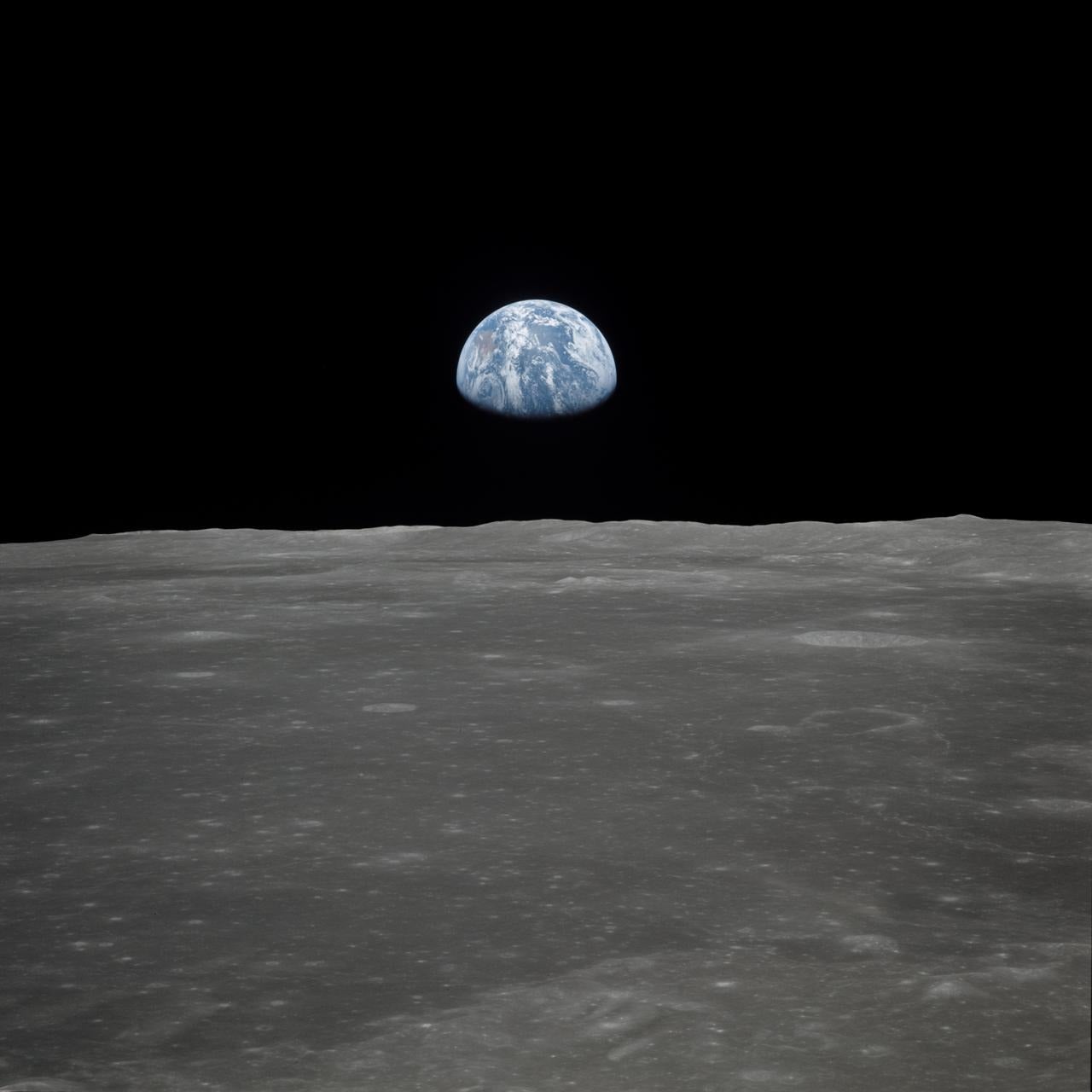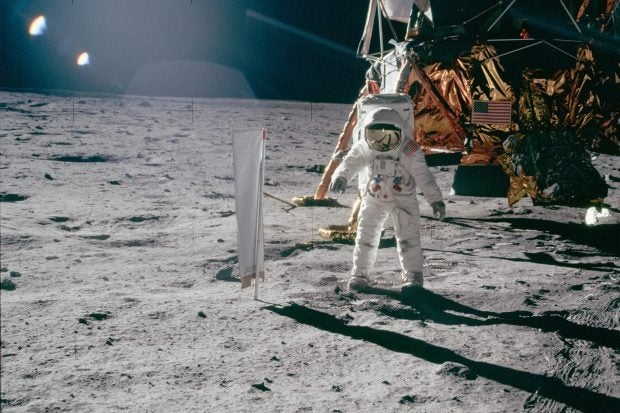
Why do pictures of Earth taken from the Moon show a black sky with no stars? Can the stars only be seen with an atmosphere?
Farris W. Bruce
Hesperia, California
The simple answer to your question is the camera settings used to take most photos from the Moon weren’t designed to capture stars.
Apollo astronauts used film cameras, so to understand the answer, we need to explain a little bit about how camera exposure works. Film is a light-sensitive emulsion over plastic. When that plastic is exposed to light through the camera’s lens, a chemical change produces a negative image of whatever is photographed.
But the amount of light isn’t always the same. A photographer has to consider the lens aperture and shutter speed, both of which control how much light hits the film. A smaller aperture means less light, as does a faster shutter speed. It’s almost like how your pupil constricts on a bright day and dilates at night: Your eye automatically adjusts your aperture so that you can see in different conditions.
A photographer also has to consider the most important part of the photograph before setting aperture and shutter speed. Generally speaking, the brighter the target object, the smaller the aperture and the faster the shutter; otherwise, too much light will hit the film, and the photo will be dominated by a washed-out, overexposed focal point.
Related: Do you have a space-related question? Ask Astro here.
Let’s say you’re Neil Armstrong photographing Buzz Aldrin during a bright lunar day. Buzz (in his spacesuit) and the lunar surface are going to be the brightest objects in your shot. So for him to be visible, you want to choose a fast shutter speed and a smaller aperture. The result is a clear image of Buzz, but other light sources, like the stars, are too dim to leave an impression on the film.

Because the most important things the astronauts photographed were each other and the Moon’s surface, their cameras were set to capture them in focus — not the dimmer, distant stars. But there are some images where you can see stars in space. Apollo astronauts left the camera’s shutter open longer during some photographic experiments. The results show pinpoints of light behind the bright, fuzzy blobs that are the overexposed Moon or Earth.
Amy Shira Teitel
Spaceflight historian, Pasadena, California
This article was first published in 2019 and has been updated with new photos.









